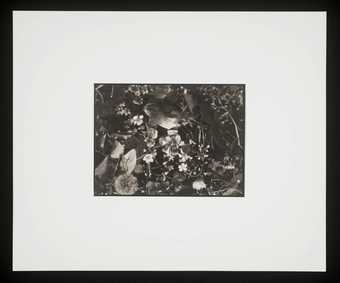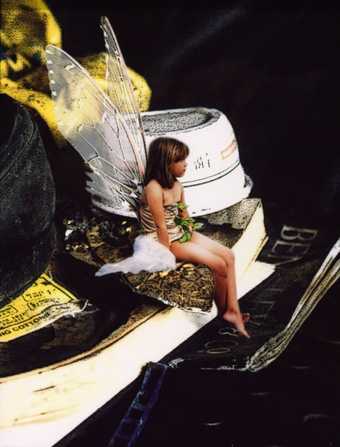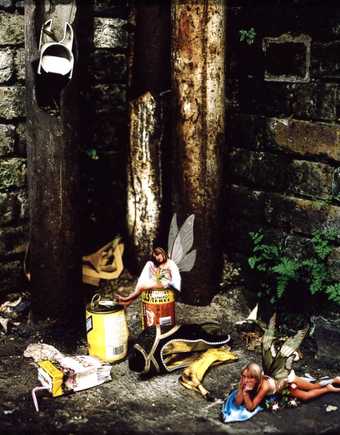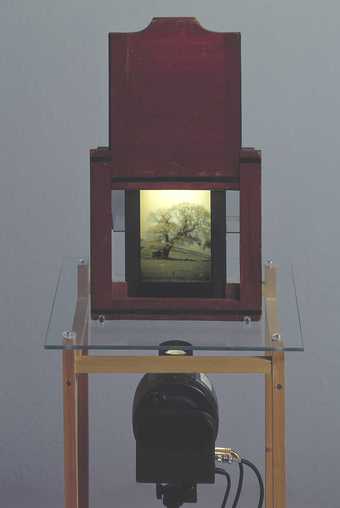Mat Collishaw:
I’m Mat Collishaw and this is my exhibition – Hysteria at the Freud Museum. They have contemporary art exhibitions here maybe once or twice a year, curated usually by James Putman, so he’ll pick somebody who he thinks is appropriate. And I’ve done a couple of shows with James, and we just came to talking about it might be something that bigger projects work on.
The Freud Museum is, or was, Freud’s house – not for very long – for about a year or something I think, when he fled Austria and came to live in London. And I think he set up a bit of a clinic here. His daughter was here, and since he died, it’s been taken over as a museum. All of his relics and collections have been left pretty much as he left them.
The title came from the investigation into the phenomenon of hysteria. There’s a print hanging above Freud’s couch which is Charcot, one of Freud’s mentors, doing like a hypnosis which was part of his research into what happened when women were exposed to conditions that weren’t quite normal. There were also drugs and alcohol and various things involved as well as hypnosis, but essentially the investigation into hysteria, particularly in women – oddly.
So in the dining room, where we are now, I have 'cylinder anamorphosis', and I’ve distorted the print above Freud’s couch and made an anamorphosis of it and put a cylinder on top. If you look into the mirrored cylinder, the reflection that you see corrects the distortion. So this is Charcot here, and this is a woman that he has hypnotised. She is in a position like she’s just fainted. Her top’s coming down a little bit, and you can almost see her cleavage there. Then you’ve got this group of gentlemen sitting around watching this whole experiment going on. So it does have a little bit of a kind of dodgy feel about the whole image. This was called Women under the influence, which kind of refers to the amount of substance abuse that went on before they were photographed, before they were analysed. And a lot of them died as drug addicts and alcoholics because of the amount of substances they were given. I also thought that maybe Freud, when he was sitting in here at the end of his days, smoking his cigar, maybe one of those women’s faces might have came back to haunt him a little bit, formed out of the cigar smoke, and just stood there appealing to him – I don’t know.
At first when you go into the study, there are three little tree stumps near the couch, near Freud’s desk, and they are actually record players that have 12 inch and 7 inch vinyl discs. They are photo discs, so they have the imprint of tree stumps concentric rings on the top, and they are also playing the sound of birdsong. They are kind of quite a literal interpretation of what was going on in that room. People used to lie down, they’d talk about memories. Freud would then interpret them. So it’s as if those things were delivered in a kind of code which Freud would then make his analysis of.
In a similar way, the concentric rings in tree stumps are a kind of code which we can discern. The memory of this tree, the whole recall of the tree, is encrypted on these vinyl records from the beginning of their life to the moment that they were chopped down.
The Garden of Unearthly Delights in the Anna Freud room is a 3-D zoetrope which has a scene of some little imps causing mayhem in a kind of English garden that I’ve created. It’s basically the idea that I had that once things start moving, once God animated Adam, the trouble started, so the idea of having a sculpture which is kinetic, and somehow starts moving. As soon as that movement starts, trouble starts happening. But it seemed quite appropriate for the Anna Freud room, because that would be a place where little boys, particularly, who had been a little bit naughty, maybe a little bit violent, would have been taken, and perhaps described as having a condition that wasn’t altogether healthy, just because they were a little bit naughty. I’m not really sure how that works. Maybe little boys are just naughty as they are, anyway.
I don’t like being given a particular context to make work in at all. I think it was kind of antithetical to art practice. You should be making work into the void. That’s kind of what you’re doing as an artist – you’re putting something out into nowhere, and I think that should stand upon its own, which should be quite a brave thing to do, because you’re creating something from nothing. So then if you’re creating it for a particular context where you’re using the parameters in a certain kind of way, to me it almost feels like cheating a little bit. I prefer to be making things purely for the void.







